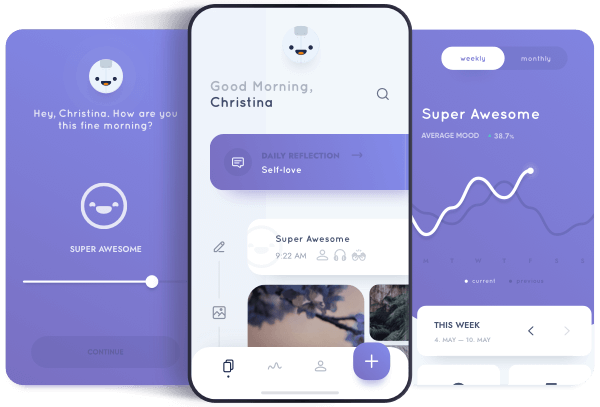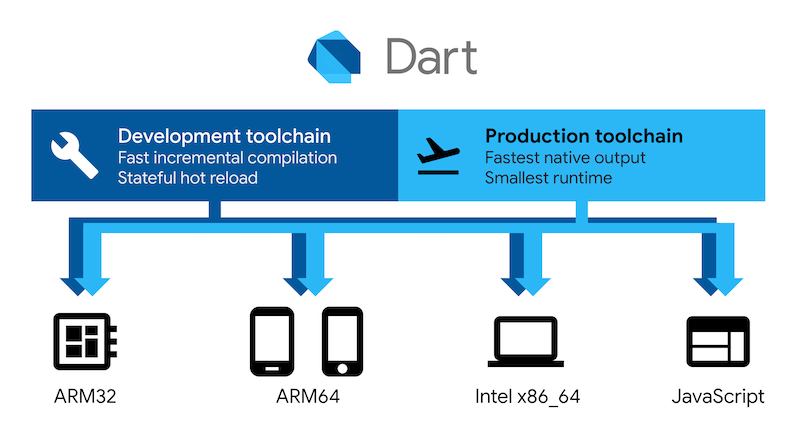<!-- start_original_pr_link -->
Reverts: flutter/flutter#165589
<!-- end_original_pr_link -->
<!-- start_initiating_author -->
Initiated by: Renzo-Olivares
<!-- end_initiating_author -->
<!-- start_revert_reason -->
Reason for reverting: breaking internal tests
<!-- end_revert_reason -->
<!-- start_original_pr_author -->
Original PR Author: Renzo-Olivares
<!-- end_original_pr_author -->
<!-- start_reviewers -->
Reviewed By: {Piinks}
<!-- end_reviewers -->
<!-- start_revert_body -->
This change reverts the following previous change:
Currently when using a `CustomScrollView`, screen readers cannot list or
move focus to elements that are outside the current Viewport and cache
extent because we do not create semantic nodes for these elements.
This change introduces `SliverEnsureSemantics` which ensures its sliver
child is included in the semantics tree, whether or not it is currently
visible on the screen or within the cache extent. This way screen
readers are aware the elements are there and can navigate to them /
create accessibility traversal menus with this information.
* Under the hood a new flag has been added to `RenderSliver` called
`ensureSemantics`. `RenderViewportBase` uses this in its
`visitChildrenForSemantics` to ensure a sliver is visited when creating
the semantics tree. Previously a sliver was not visited if it was not
visible or within the cache extent. `RenderViewportBase` also uses this
in `describeSemanticsClip` and `describeApproximatePaintClip` to ensure
a sliver child that wants to "ensure semantics" is not clipped out if it
is not currently visible in the viewport or outside the cache extent.
* `RenderSliverMultiBoxAdaptor.semanticBounds` now leverages its first
child as an anchor for assistive technologies to be able to reach it if
the Sliver is a child of `SliverEnsureSemantics`. If not it will still
be dropped from the semantics tree.
* `RenderProxySliver` now considers child overrides of `semanticBounds`.
On the engine side we move from using a joystick method to scroll with
`SemanticsAction.scrollUp` and `SemanticsAction.scrollDown` to using
`SemanticsAction.scrollToOffset` completely letting the browser drive
the scrolling with its current dom scroll position "scrollTop" or
"scrollLeft". This is possible by calculating the total quantity of
content under the scrollable and sizing the scroll element based on
that.
<details open><summary>Code sample</summary>
```dart
// Copyright 2014 The Flutter Authors. All rights reserved.
// Use of this source code is governed by a BSD-style license that can be
// found in the LICENSE file.
import 'package:flutter/material.dart';
import 'package:flutter/rendering.dart';
/// Flutter code sample for [SliverEnsureSemantics].
void main() => runApp(const SliverEnsureSemanticsExampleApp());
class SliverEnsureSemanticsExampleApp extends StatelessWidget {
const SliverEnsureSemanticsExampleApp({super.key});
@override
Widget build(BuildContext context) {
return const MaterialApp(home: SliverEnsureSemanticsExample());
}
}
class SliverEnsureSemanticsExample extends StatefulWidget {
const SliverEnsureSemanticsExample({super.key});
@override
State<SliverEnsureSemanticsExample> createState() =>
_SliverEnsureSemanticsExampleState();
}
class _SliverEnsureSemanticsExampleState
extends State<SliverEnsureSemanticsExample> {
@override
Widget build(BuildContext context) {
final ThemeData theme = Theme.of(context);
return Scaffold(
appBar: AppBar(
backgroundColor: theme.colorScheme.inversePrimary,
title: const Text('SliverEnsureSemantics Demo'),
),
body: Center(
child: CustomScrollView(
semanticChildCount: 106,
slivers: <Widget>[
SliverEnsureSemantics(
sliver: SliverToBoxAdapter(
child: IndexedSemantics(
index: 0,
child: Card(
child: Padding(
padding: const EdgeInsets.all(8.0),
child: Column(
crossAxisAlignment: CrossAxisAlignment.start,
children: <Widget>[
Semantics(
header: true,
headingLevel: 3,
child: Text(
'Steps to reproduce',
style: theme.textTheme.headlineSmall,
),
),
const Text('Issue description'),
Semantics(
header: true,
headingLevel: 3,
child: Text(
'Expected Results',
style: theme.textTheme.headlineSmall,
),
),
Semantics(
header: true,
headingLevel: 3,
child: Text(
'Actual Results',
style: theme.textTheme.headlineSmall,
),
),
Semantics(
header: true,
headingLevel: 3,
child: Text(
'Code Sample',
style: theme.textTheme.headlineSmall,
),
),
Semantics(
header: true,
headingLevel: 3,
child: Text(
'Screenshots',
style: theme.textTheme.headlineSmall,
),
),
Semantics(
header: true,
headingLevel: 3,
child: Text(
'Logs',
style: theme.textTheme.headlineSmall,
),
),
],
),
),
),
),
),
),
SliverFixedExtentList(
itemExtent: 44.0,
delegate: SliverChildBuilderDelegate(
(BuildContext context, int index) {
return Card(
child: Padding(
padding: const EdgeInsets.all(8.0),
child: Text('Item $index'),
),
);
},
childCount: 50,
semanticIndexOffset: 1,
),
),
SliverEnsureSemantics(
sliver: SliverToBoxAdapter(
child: IndexedSemantics(
index: 51,
child: Card(
child: Padding(
padding: const EdgeInsets.all(8.0),
child: Semantics(
header: true,
child: const Text('Footer 1'),
),
),
),
),
),
),
SliverEnsureSemantics(
sliver: SliverToBoxAdapter(
child: IndexedSemantics(
index: 52,
child: Card(
child: Padding(
padding: const EdgeInsets.all(8.0),
child: Semantics(
header: true,
child: const Text('Footer 2'),
),
),
),
),
),
),
SliverEnsureSemantics(
sliver: SliverToBoxAdapter(
child: IndexedSemantics(
index: 53,
child: Semantics(link: true, child: const Text('Link #1')),
),
),
),
SliverEnsureSemantics(
sliver: SliverToBoxAdapter(
child: IndexedSemantics(
index: 54,
child: OverflowBar(
children: <Widget>[
TextButton(
onPressed: () {},
child: const Text('Button 1'),
),
TextButton(
onPressed: () {},
child: const Text('Button 2'),
),
],
),
),
),
),
SliverEnsureSemantics(
sliver: SliverToBoxAdapter(
child: IndexedSemantics(
index: 55,
child: Semantics(link: true, child: const Text('Link #2')),
),
),
),
SliverEnsureSemantics(
sliver: SliverSemanticsList(
sliver: SliverFixedExtentList(
itemExtent: 44.0,
delegate: SliverChildBuilderDelegate(
(BuildContext context, int index) {
return Semantics(
role: SemanticsRole.listItem,
child: Card(
child: Padding(
padding: const EdgeInsets.all(8.0),
child: Text('Second List Item $index'),
),
),
);
},
childCount: 50,
semanticIndexOffset: 56,
),
),
),
),
SliverEnsureSemantics(
sliver: SliverToBoxAdapter(
child: IndexedSemantics(
index: 107,
child: Semantics(link: true, child: const Text('Link #3')),
),
),
),
],
),
),
);
}
}
// A sliver that assigns the role of SemanticsRole.list to its sliver child.
class SliverSemanticsList extends SingleChildRenderObjectWidget {
const SliverSemanticsList({super.key, required Widget sliver})
: super(child: sliver);
@override
RenderSliverSemanticsList createRenderObject(BuildContext context) =>
RenderSliverSemanticsList();
}
class RenderSliverSemanticsList extends RenderProxySliver {
@override
void describeSemanticsConfiguration(SemanticsConfiguration config) {
super.describeSemanticsConfiguration(config);
config.role = SemanticsRole.list;
}
}
```
</details>
Fixes: #160217
## Pre-launch Checklist
- [x] I read the [Contributor Guide] and followed the process outlined
there for submitting PRs.
- [x] I read the [Tree Hygiene] wiki page, which explains my
responsibilities.
- [x] I read and followed the [Flutter Style Guide], including [Features
we expect every widget to implement].
- [x] I signed the [CLA].
- [x] I listed at least one issue that this PR fixes in the description
above.
- [x] I updated/added relevant documentation (doc comments with `///`).
- [x] I added new tests to check the change I am making, or this PR is
[test-exempt].
- [x] I followed the [breaking change policy] and added [Data Driven
Fixes] where supported.
- [x] All existing and new tests are passing.
<!-- end_revert_body -->
Co-authored-by: auto-submit[bot] <flutter-engprod-team@google.com>
|
||
|---|---|---|
| .github | ||
| .vscode | ||
| bin | ||
| buildtools | ||
| dev | ||
| docs | ||
| engine | ||
| examples | ||
| packages | ||
| third_party | ||
| .ci.yaml | ||
| .gitattributes | ||
| .gitignore | ||
| analysis_options.yaml | ||
| AUTHORS | ||
| CHANGELOG.md | ||
| CODE_OF_CONDUCT.md | ||
| CODEOWNERS | ||
| CONTRIBUTING.md | ||
| dartdoc_options.yaml | ||
| DEPS | ||
| flutter_console.bat | ||
| LICENSE | ||
| PATENT_GRANT | ||
| README.md | ||
| TESTOWNERS | ||
Flutter is Google's SDK for crafting beautiful, fast user experiences for mobile, web, and desktop from a single codebase. Flutter works with existing code, is used by developers and organizations around the world, and is free and open source.
Documentation
For announcements about new releases, follow the flutter-announce@googlegroups.com mailing list. Our documentation also tracks breaking changes across releases.
Terms of service
The Flutter tool may occasionally download resources from Google servers. By downloading or using the Flutter SDK, you agree to the Google Terms of Service: https://policies.google.com/terms
For example, when installed from GitHub (as opposed to from a prepackaged
archive), the Flutter tool will download the Dart SDK from Google servers
immediately when first run, as it is used to execute the flutter tool itself.
This will also occur when Flutter is upgraded (e.g. by running the flutter upgrade command).
About Flutter
We think Flutter will help you create beautiful, fast apps, with a productive, extensible and open development model, whether you're targeting iOS or Android, web, Windows, macOS, Linux or embedding it as the UI toolkit for a platform of your choice.
Beautiful user experiences
We want to enable designers to deliver their full creative vision without being forced to water it down due to limitations of the underlying framework. Flutter's layered architecture gives you control over every pixel on the screen and its powerful compositing capabilities let you overlay and animate graphics, video, text, and controls without limitation. Flutter includes a full set of widgets that deliver pixel-perfect experiences whether you're building for iOS (Cupertino) or other platforms (Material), along with support for customizing or creating entirely new visual components.

Fast results
Flutter is fast. It's powered by hardware-accelerated 2D graphics libraries like Skia (which underpins Chrome and Android) and Impeller. We architected Flutter to support glitch-free, jank-free graphics at the native speed of your device.
Flutter code is powered by the world-class Dart platform, which enables compilation to 32-bit and 64-bit ARM machine code for iOS and Android, JavaScript and WebAssembly for the web, as well as Intel x64 and ARM for desktop devices.

Productive development
Flutter offers stateful hot reload, allowing you to make changes to your code and see the results instantly without restarting your app or losing its state.
Extensible and open model
Flutter works with any development tool (or none at all), and also includes editor plug-ins for both Visual Studio Code and IntelliJ / Android Studio. Flutter provides tens of thousands of packages to speed your development, regardless of your target platform. And accessing other native code is easy, with support for both FFI (on Android, on iOS, on macOS, and on Windows) as well as platform-specific APIs.
Flutter is a fully open-source project, and we welcome contributions. Information on how to get started can be found in our contributor guide.





